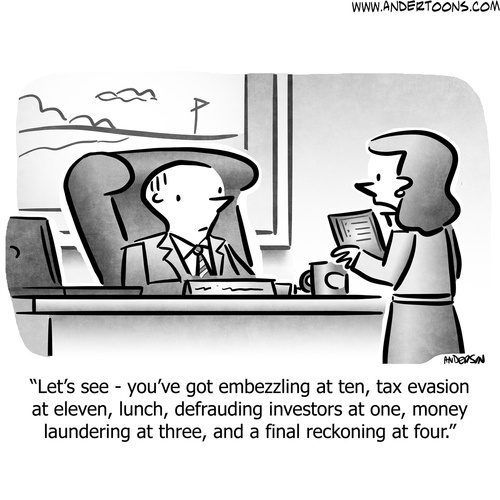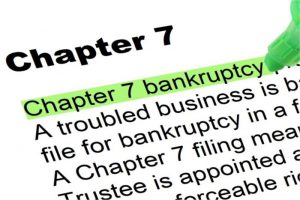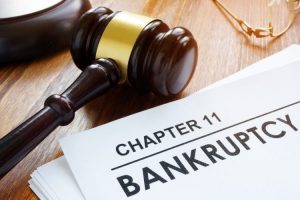 In the difficult circumstances we find ourselves today, many small companies, often backed by venture capital, private equity or significant debt financing, especially those which are not cash flow breakeven, at some point may face the prospect of running out of cash.
In the difficult circumstances we find ourselves today, many small companies, often backed by venture capital, private equity or significant debt financing, especially those which are not cash flow breakeven, at some point may face the prospect of running out of cash.
This blog focuses on the options available to companies when they are in the process of running out of options to continue the business and need to consider a wind down.
Fiduciary Duties And Maximizing Value …
Let’s start with a refresher on the fiduciary duties of directors and officers of a Washington corporation in financial distress.
 Under the law in many states, directors and officers owe fiduciary duties of due care and loyalty. The duty of due care requires directors and officers to make fully informed, good faith decisions in the best interests of the company.
Under the law in many states, directors and officers owe fiduciary duties of due care and loyalty. The duty of due care requires directors and officers to make fully informed, good faith decisions in the best interests of the company.
The duty of loyalty imposes on directors and officers the obligation not to engage in self-dealing and instead to put the interests of the company ahead of their own.
When a company is solvent, the directors and officers owe their fiduciary duties of due care and loyalty to the corporation and its stockholders.
That remains true even if the company is in the so-called “zone of insolvency.”
When A Company Is Insolvent …
When a company is insolvent and will not be able to pay its creditors in full, the directors and officers still owe their fiduciary duties of due care and loyalty to the corporation.
However, upon insolvency, the creditors have the right to bring derivative (but not direct) claims for breach of fiduciary duty against directors and officers.
 Remember, it can be challenging to determine whether a company is just in the zone of insolvency (meaning still solvent but approaching insolvency) or whether it has crossed the line into actual insolvency.
Remember, it can be challenging to determine whether a company is just in the zone of insolvency (meaning still solvent but approaching insolvency) or whether it has crossed the line into actual insolvency.
Discharging fiduciary duties when a company is insolvent means a focus on maximizing enterprise value. This is a highly fact-dependent exercise with no one-size-fits-all approach. In some cases, maximizing value may mean continuing operations – even though that burns dwindling cash – to allow the company to complete a sale that the directors believe is likely to close and produce significant value for creditors.
In other cases, it may mean winding down (or even shutting down) operations quickly to conserve cash, especially if any asset sale is not expected to generate more than the cash required to pursue it.
These complexities make it critical for directors and officers of a company in financial distress to get professional advice tailored to the specific facts and circumstances at hand.
Legal Options For A Wind Down …
When the board decides that the company needs to wind down, options range from an informal approach all the way to a public bankruptcy filing. Note that if the company owes money to a bank or other secured creditor, the lender’s right to foreclose on the company’s assets could become a paramount consideration and affect how the wind down is accomplished. The following is a brief discussion of various wind down options.
Informal wind down: In an informal wind down, the company typically tries to find a buyer for its assets, eventually lays off its employees, and shuts down any unsold business operations, but does not complete a formal end to the corporate existence. This lack of finality can leave legal loose ends, so alternatives should be carefully considered.
 Corporate Dissolution: A corporate dissolution is a formal process under Washington or Delaware law, typically managed by a company officer, for winding up the affairs of the corporation, liquidating assets, and ending the company’s legal existence. A company may choose to do a corporate dissolution when it doesn’t need receivership or bankruptcy protection (and prefers not to file bankruptcy) but wants a formal, legal wind down of the corporate entity.
Corporate Dissolution: A corporate dissolution is a formal process under Washington or Delaware law, typically managed by a company officer, for winding up the affairs of the corporation, liquidating assets, and ending the company’s legal existence. A company may choose to do a corporate dissolution when it doesn’t need receivership or bankruptcy protection (and prefers not to file bankruptcy) but wants a formal, legal wind down of the corporate entity.
Assignment for the Benefit of Creditors: Receivership: Many states, notably including California, Washington and Delaware, recognize a  formal process through which a company can hire a professional fiduciary and make a general assignment of the company’s assets and liabilities to that fiduciary, known as the Assignee. In California, no court filing is involved. The Assignee in turn is charged with liquidating the company’s assets for the benefit of creditors, who are notified of the ABC process and instructed to submit claims to the Assignee. If a buyer has been identified, an Assignee may be able to close an asset sale soon after the ABC is made. In Washington, the assignee converts the assignment to a General receivership and manages the process as a general receiver.
formal process through which a company can hire a professional fiduciary and make a general assignment of the company’s assets and liabilities to that fiduciary, known as the Assignee. In California, no court filing is involved. The Assignee in turn is charged with liquidating the company’s assets for the benefit of creditors, who are notified of the ABC process and instructed to submit claims to the Assignee. If a buyer has been identified, an Assignee may be able to close an asset sale soon after the ABC is made. In Washington, the assignee converts the assignment to a General receivership and manages the process as a general receiver.
Chapter 7 Bankruptcy: A Chapter 7 bankruptcy is a public filing with the United States Bankruptcy Court. A  bankruptcy trustee is appointed to take control of all of the company’s assets, including the company’s attorney-client privilege, and the directors and officers no longer have any decision-making authority over the company or its assets. A Chapter 7 trustee rarely operates the business and instead typically terminates any remaining employees and liquidates all assets of the company. The filing triggers the bankruptcy automatic stay, which prevents secured creditors from foreclosing on the company’s assets and creditors from pursuing or continuing lawsuits. The trustee has authority to bring litigation claims on behalf of the corporation, often to recover preferential transfers but sometimes asserting breach of fiduciary duty claims against directors or officers. Unlike a dissolution or an ABC, the bankruptcy trustee in charge of the liquidation process is not chosen by the company.
bankruptcy trustee is appointed to take control of all of the company’s assets, including the company’s attorney-client privilege, and the directors and officers no longer have any decision-making authority over the company or its assets. A Chapter 7 trustee rarely operates the business and instead typically terminates any remaining employees and liquidates all assets of the company. The filing triggers the bankruptcy automatic stay, which prevents secured creditors from foreclosing on the company’s assets and creditors from pursuing or continuing lawsuits. The trustee has authority to bring litigation claims on behalf of the corporation, often to recover preferential transfers but sometimes asserting breach of fiduciary duty claims against directors or officers. Unlike a dissolution or an ABC, the bankruptcy trustee in charge of the liquidation process is not chosen by the company.
Chapter 11 Bankruptcy: A Chapter 11 bankruptcy is also a public filing with the U.S. Bankruptcy Court, and it similarly triggers the  bankruptcy automatic stay. Unlike a Chapter 7 bankruptcy, in Chapter 11, often known as a reorganization bankruptcy, the board and management remain in control of the company’s assets (at least initially) as a “debtor in possession” or DIP. Business operations often continue and funding them and the higher cost of the Chapter 11 process requires DIP financing and/or use of a lender’s cash collateral. One primary use of Chapter 11 by a small or mid-sized company is to sell assets “free and clear” of liens, claims and interests through a Bankruptcy Court-approved sale process under Section 363 of the Bankruptcy Code.
bankruptcy automatic stay. Unlike a Chapter 7 bankruptcy, in Chapter 11, often known as a reorganization bankruptcy, the board and management remain in control of the company’s assets (at least initially) as a “debtor in possession” or DIP. Business operations often continue and funding them and the higher cost of the Chapter 11 process requires DIP financing and/or use of a lender’s cash collateral. One primary use of Chapter 11 by a small or mid-sized company is to sell assets “free and clear” of liens, claims and interests through a Bankruptcy Court-approved sale process under Section 363 of the Bankruptcy Code.
Revitalization Partners specializes in improving the operational and financial results of companies and providing hands-on expertise in virtually every circumstance, with a focus on small and mid-market organizations. Whether your requirement is Interim Management, a Business Assessment, Revitalization and Reengineering or Receivership/Bankruptcy Support, we focus on giving you the best resolution in the fastest time with the highest possible return.



